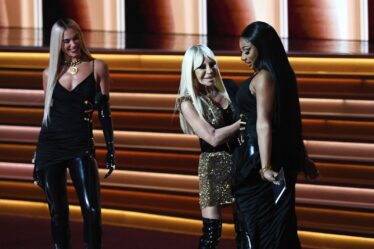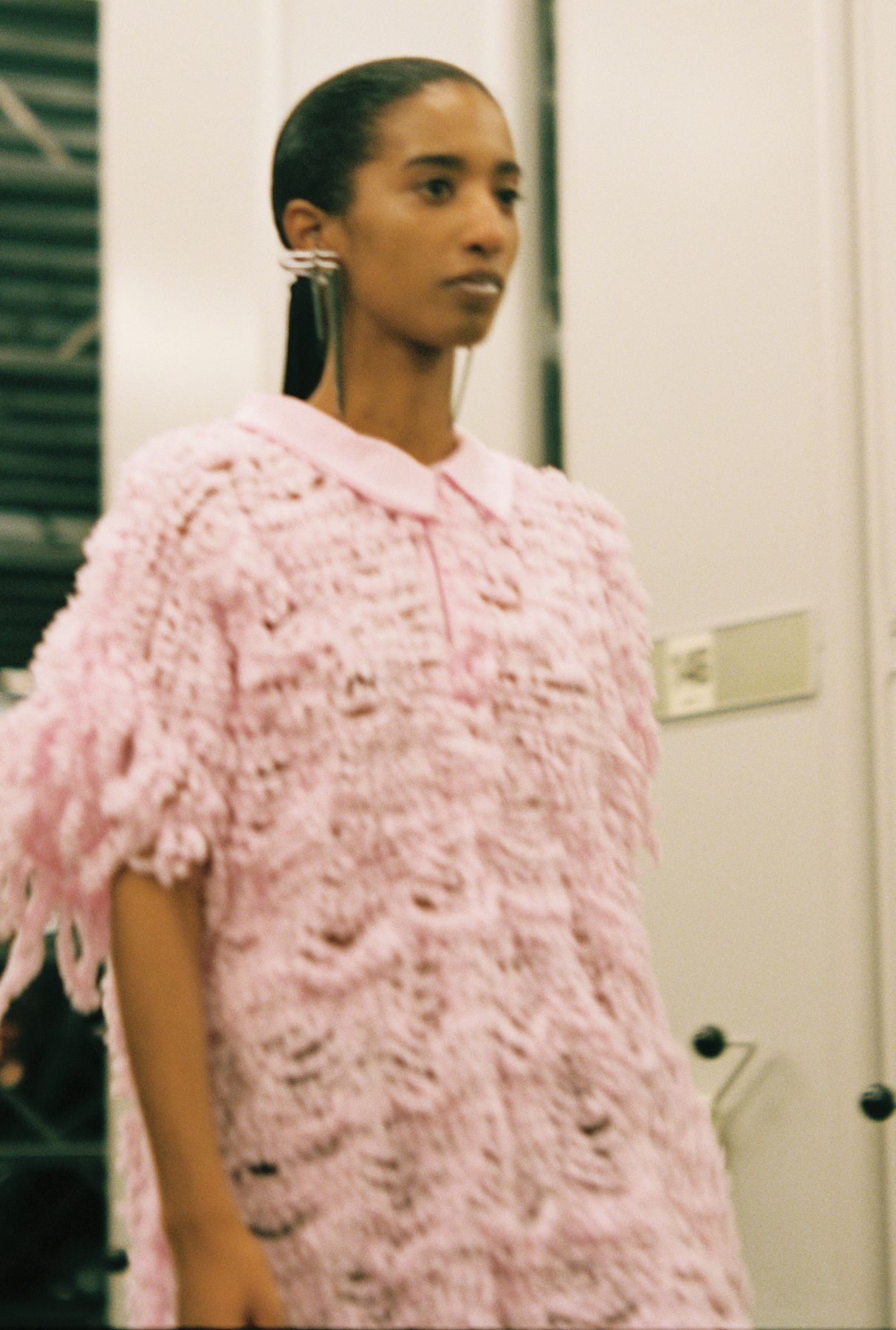
From projected holograms to goth subcultures, treat yourself to our rundown of the key event in the European style calendar…

The forward march of diversity and representation in Berlin continues in undaunted unison under the all-inclusive umbrella of rising designers, spearheading the visibility of marginalised themes even more seriously in this time of trouble.
Downturns notwithstanding, they managed to muster bracing runways by stirring up theatrical sensations of otherworldly craft using minimal devices. Put simply, this season’s mix encompassed a wealth of exquisite flesh-coloured gowns smothered in vibrant embroideries, multi-functional ensembles with an oddly constrained feel, lacy see-through dresses and a plethora of garments that alluded to an old-school, retrò-inspired glamour. And amid the hectic fury of popping neons, scalloped seams, and wearable tech, the thrills taking place at Berlin Fashion Week added emphasis on lightweight, breathable wares that contour the human body, allowing function to reign supreme.
Last Fall, 202030 – The Berlin Fashion Summit’s “Active Alliances for Positive Fashion”, a pivotal structure of the event’s sustainable strategy, addressed ethical fashion through the topics of collaboration and regeneration with regard to economic, cultural and ecological action within the industry. “It’s the hub where change-makers share solutions and signals for fashion’s necessary transformation on a corporate and cultural level,” report the notes. But back to that statement of intent: the crossover between “ready to-wear” and “practical wear” is nothing new, of course.
However, designers brought range to the fore, in line with a free-yet-structured approach to fashion which added a sense of function that appeared appealingly off-kilter and precise all at once. It’s perhaps not terribly surprising, then, that brands’ precision is a nice antidote to the slashed and destroyed counterpoints that have come to define goth style typical of Berlin.
More than anything else, what a business needs to succeed in today’s crowded fashion marketplace is a signature—a set of defining attributes that allows throngs of devotees to recognise the label’s clothes among many others. One of Berlin Fashion Week’s strengths has always been that despite a cerebral, socially-minded denotation of fashion, clothes don’t read rusty or clichéd. On the contrary, they embody a forward-thinking spirit, raising a glass in the name of innovation. Cheers to that.
Head below to read the full round-up, right now…
SF10G
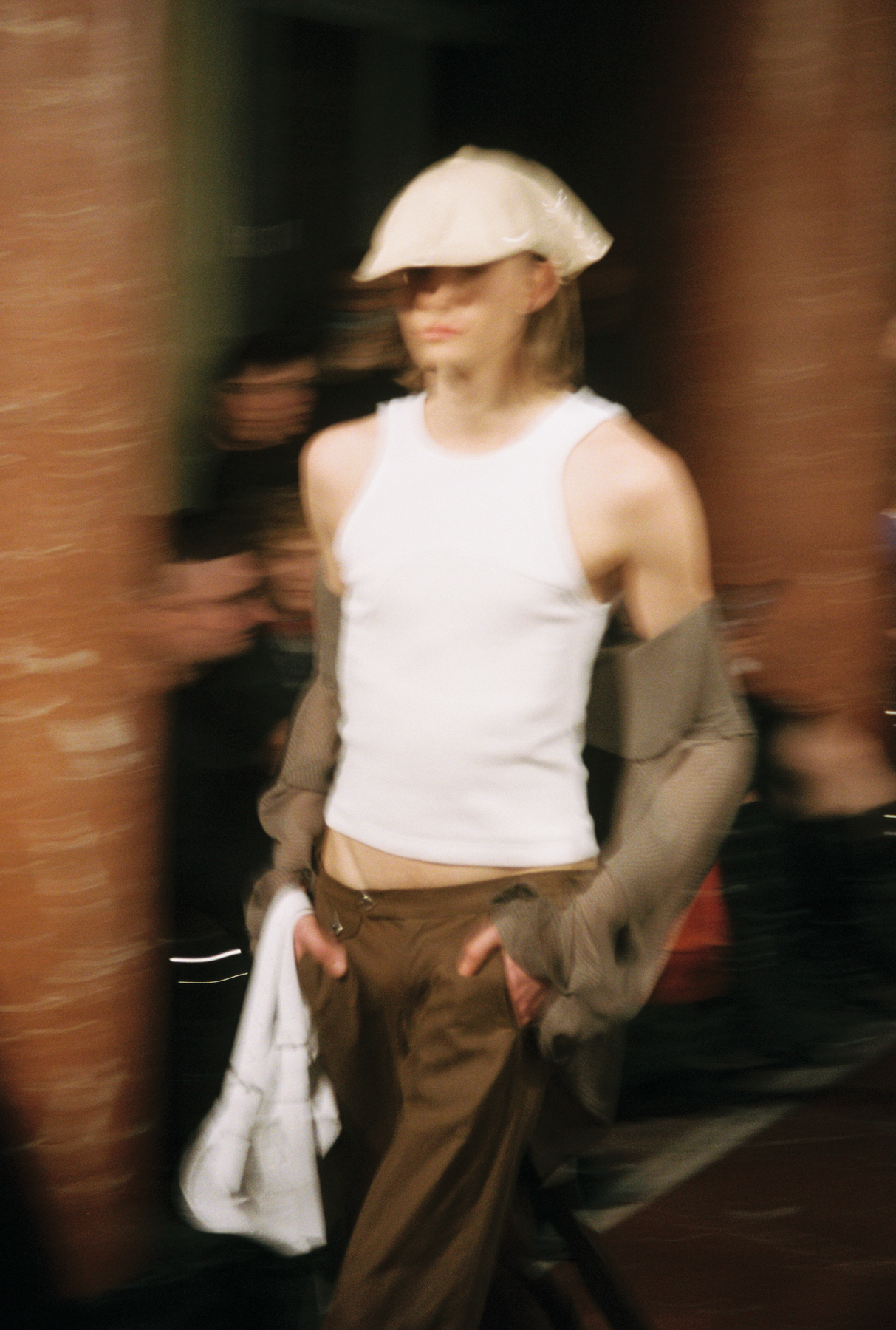
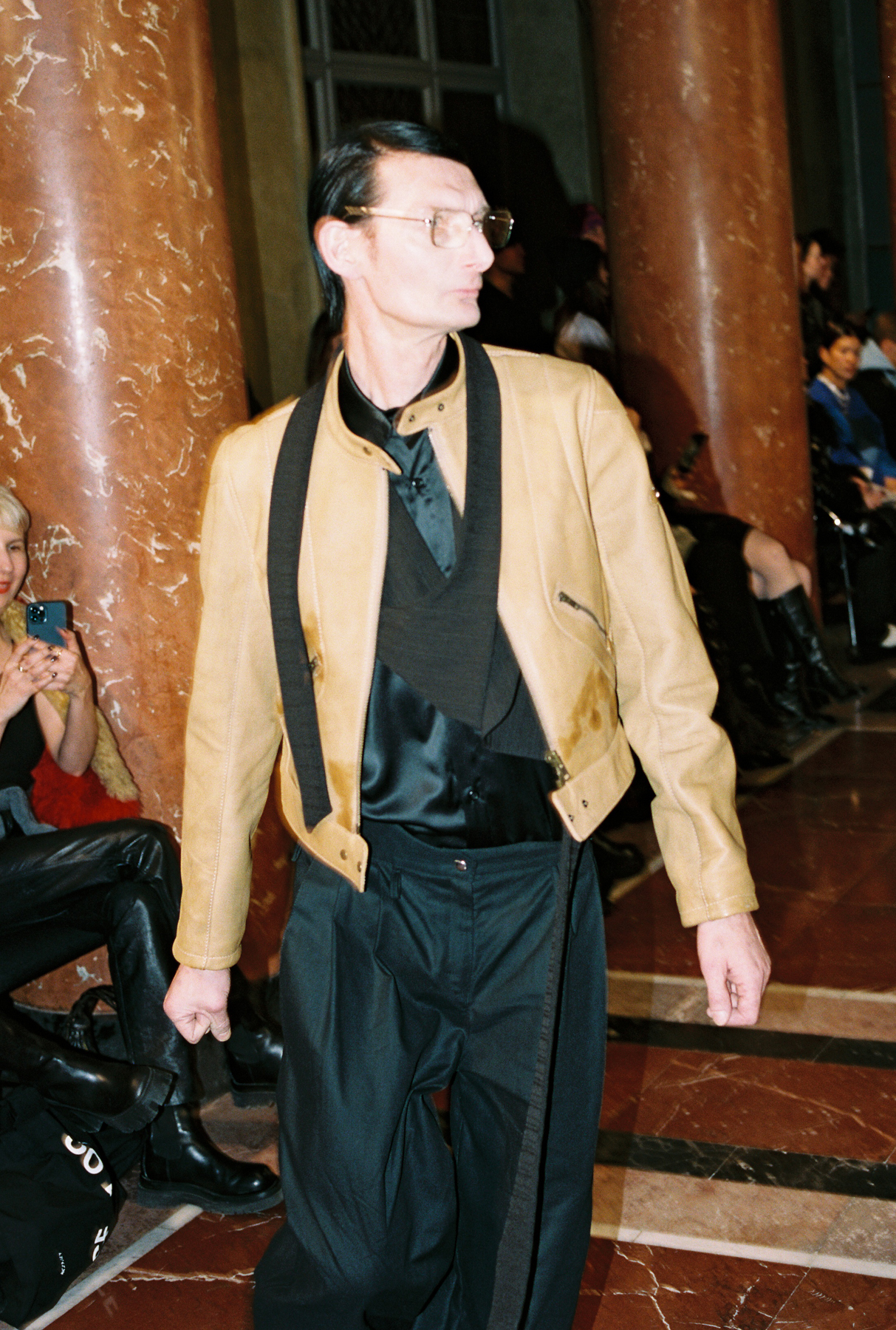
Photography by Ferry Mohr


You can tell that SF1OG designer Rosa Marga Dahl has worked behind the scenes for most of her career. She doesn’t talk about clothes in a sweeping way. There’s no big or dramatic story or inspiration behind her work. It’s more about the individual stories and using them to give the SF10G brand context. Against a Renaissance set and a soundtrack that borrowed from depths of soul-tinged memories, the show proceeded according to the polite fashion rules that have almost been forgotten over the past two years. Credit the photos and postcards from antique vintage stores. In them, she explained, memories run apace and are translated into monochromatic looks. The fact that the looks were largely monochromatic made Marga Dahl’s fabrics come to the fore—her leather and linen oilcloth fabric, for instance, with its disintegrating, crinkly appeal, or the surreal shape of the hats atop of model’s heads. Ditto the greatly neutral-toned elements here, like the long, nearly-sheer cotton toppers that cinched at the waists, or the structured outerwear that featured aplenty, which were so lightweight to seem winter-appropriate. Marga Dahl’s new definition of SF1OG is about further structuring the male silhouette: sporty, airy, fuzzy, and texture-blocked, creating a substantial lineup without the weight which scored high points for both function and experimentation. But the collection had an oddly constrained feel overall, especially for a designer who last season has championed the utilitarian eclecticism that a new, fresher clientele seem to covet. It was lovely to see Marga Dahl pushing a dreamy tone, this time, as opposed to adding a coat of polish on a functional nightmare. Indeed, the expansion of her range gave a better charge to the dystopian SF1OG atmosphere.
Sia Arnika

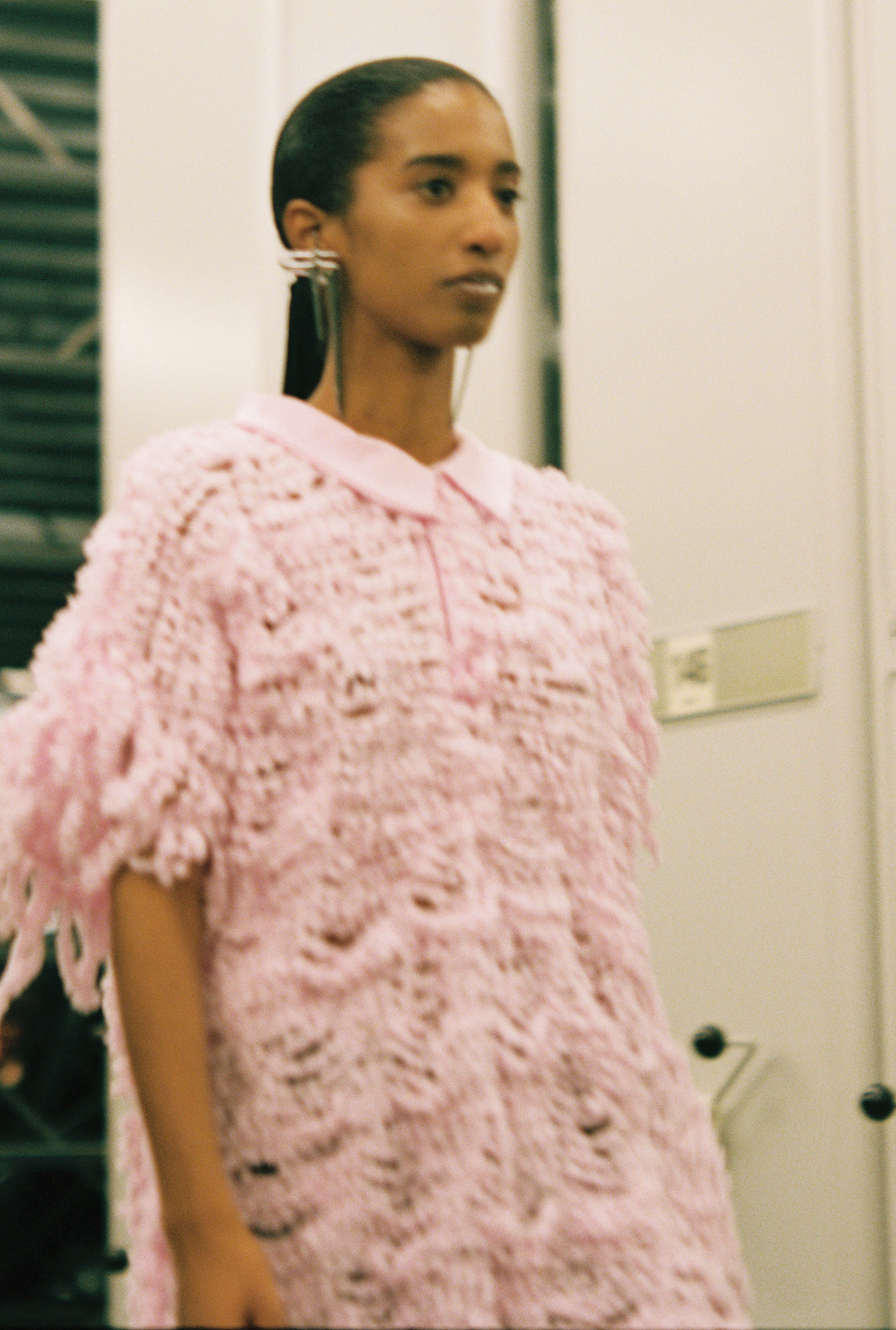


Designer Sia Arnika has an unwavering penchant for the familiar. Her craft unites the past and future, while allowing opposites to collide and thus, burgeoning her distinctive blueprint. Fall 2023 saw her debuting a runway show in the Ember Archive, framed by train tracks and a gas station. Fascinated by unusual textiles and silhouettes, the designer has always found beauty in the whimsical and the strange. This season, she found inspiration in Nordic myths and ancient folktales, where menswear offerings met hardcore futurism through the exploration of opposing forces, coupled with the dynamics of minimalism and maximalism. The designer lets deconstructed elements meet bold, unique shapes, harmonising opposites.
Fassbender
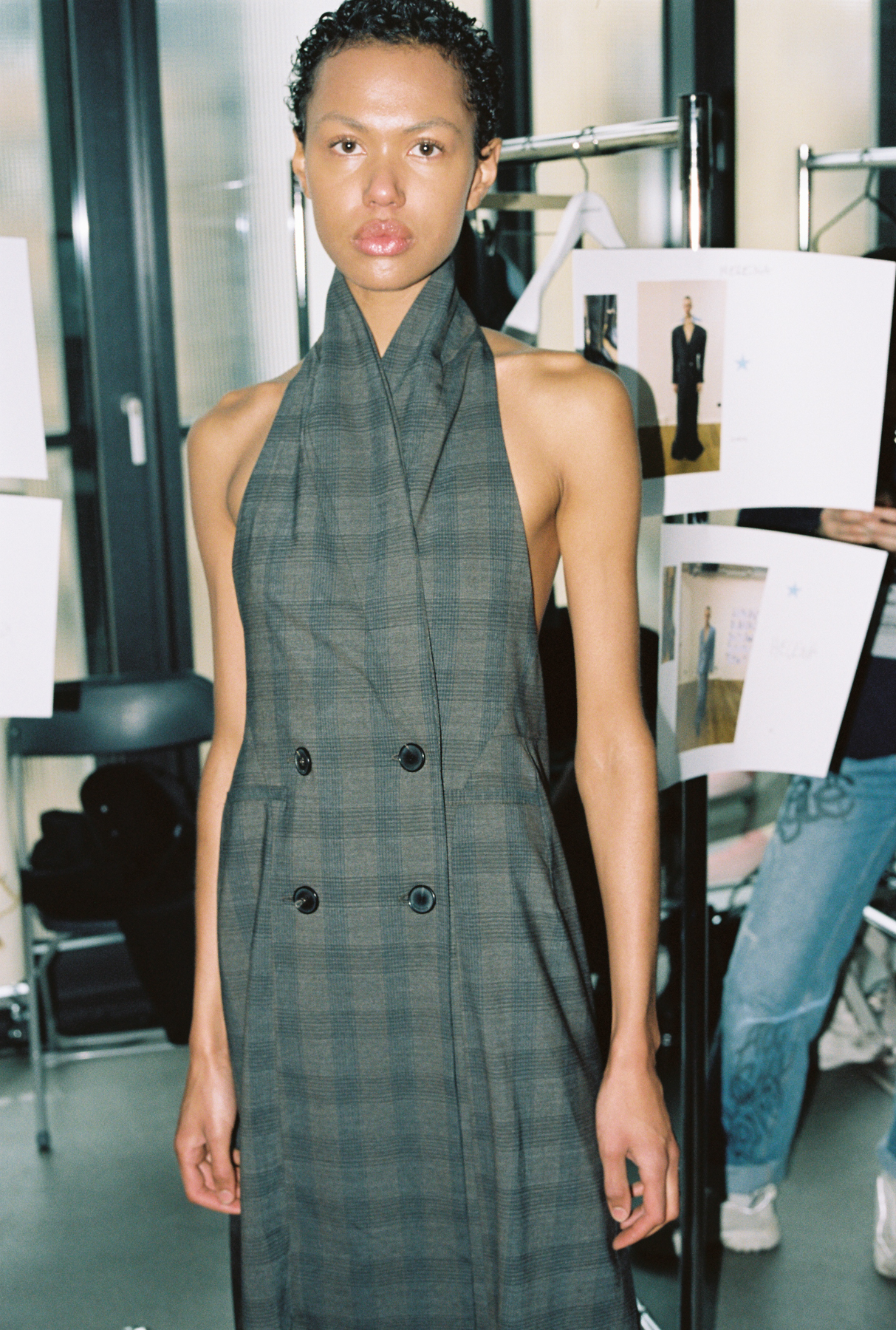
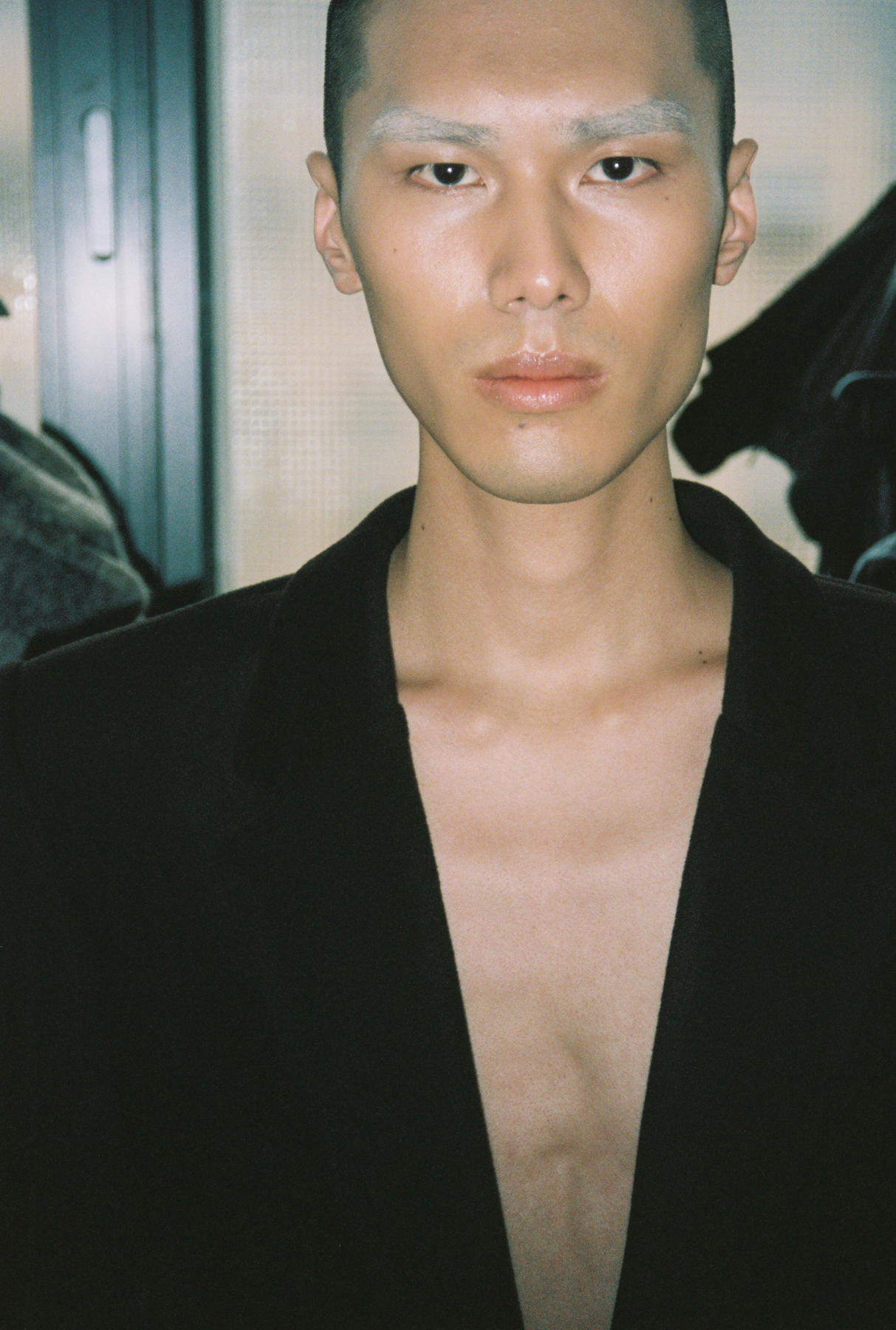
Photography by Ferry Mohr


You don’t have to suffer for Fassbender’s fashion. The shirting, suiting and minimalist edge brings a wholesome (an all-sense) chic to the label, conceiving the kind of gear you’d need on a regular basis. So how did the brand respond to the pressure on the runway? Quite gracefully. Menswear outings set easeful silhouettes, one which extended to fully-fledged tailoring. Jacket volumes were lightly gathered in the back, layered with slouchy pants and a nonchalant quality. This is a wardrobe with a real-life accent on wearability and accessibility, bringing forth breeziness and structure in equal measure while punctuating some sort of fluidity that was equal parts softly utilitarian and simplistic. In particular, the softly-structured blazers in that woollen fabric texture caught the eye, adding a lovely feel of sartorial balance to the garments.
LML

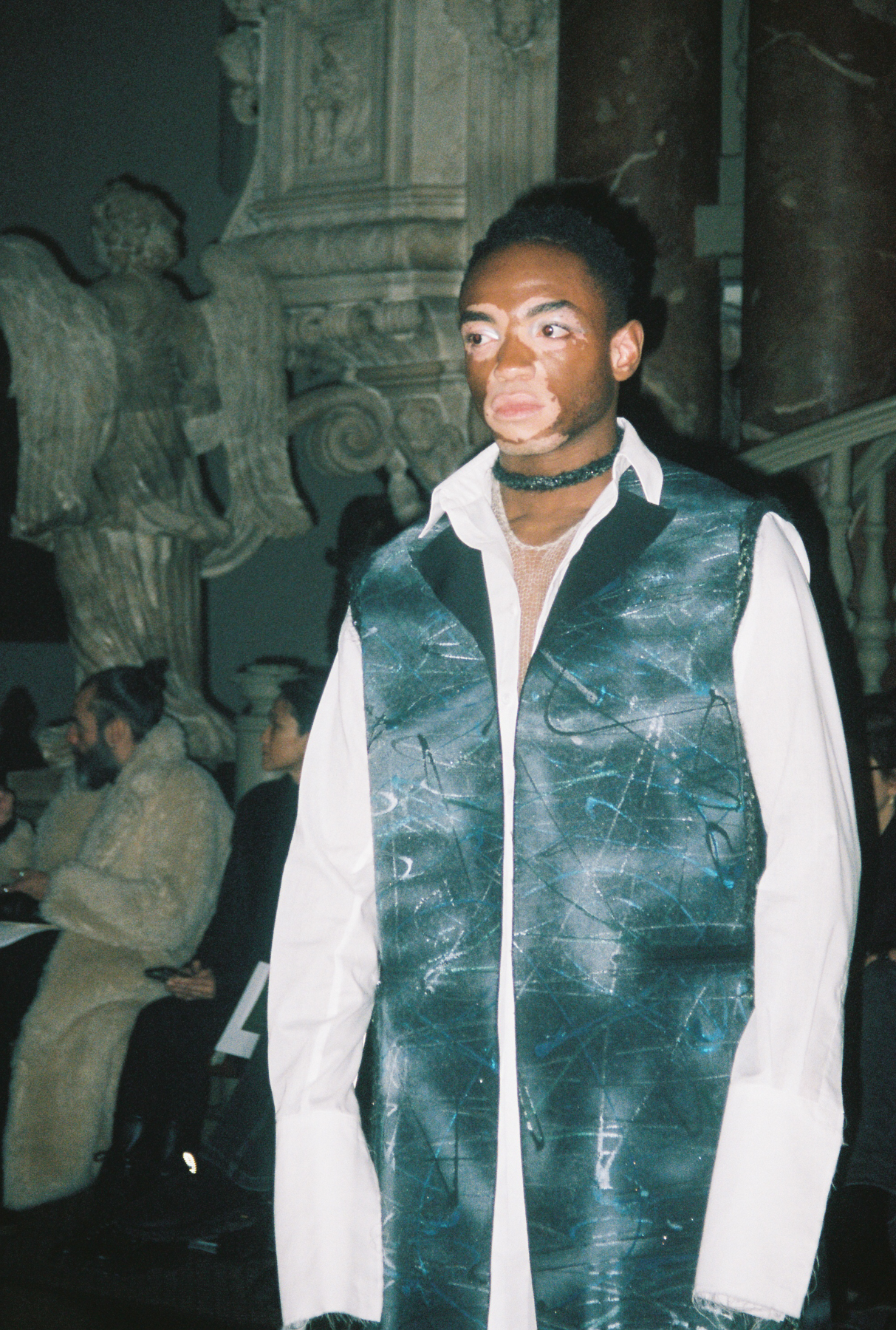
Photography by Ferry Mohr


The sacral, poignant equilibrium conceived by LML’s Lucas Meyer-Leclère checked the box on a soulful show this season. For Fall, the designer looked to the dialogue of fashion and God, analysing this link through a social lens. Presented in St. Marienkirche’s church on Alexanderplatz, Meyer-Leclère’s pragmatic state of mind was compensated for a monochromatic uniform of cutting-edge menswear offerings. From a distance, garments look stuffy, but their material is flowy and equally breezy; because he produces that kind of easy-to-wear offering, with a sartorial twist. Minimal design with complex detail. The overall mood felt lighter than usual, perhaps due to the ancient Latin polyphony which, luckily, enlivened the whole ambience.
Odeeh
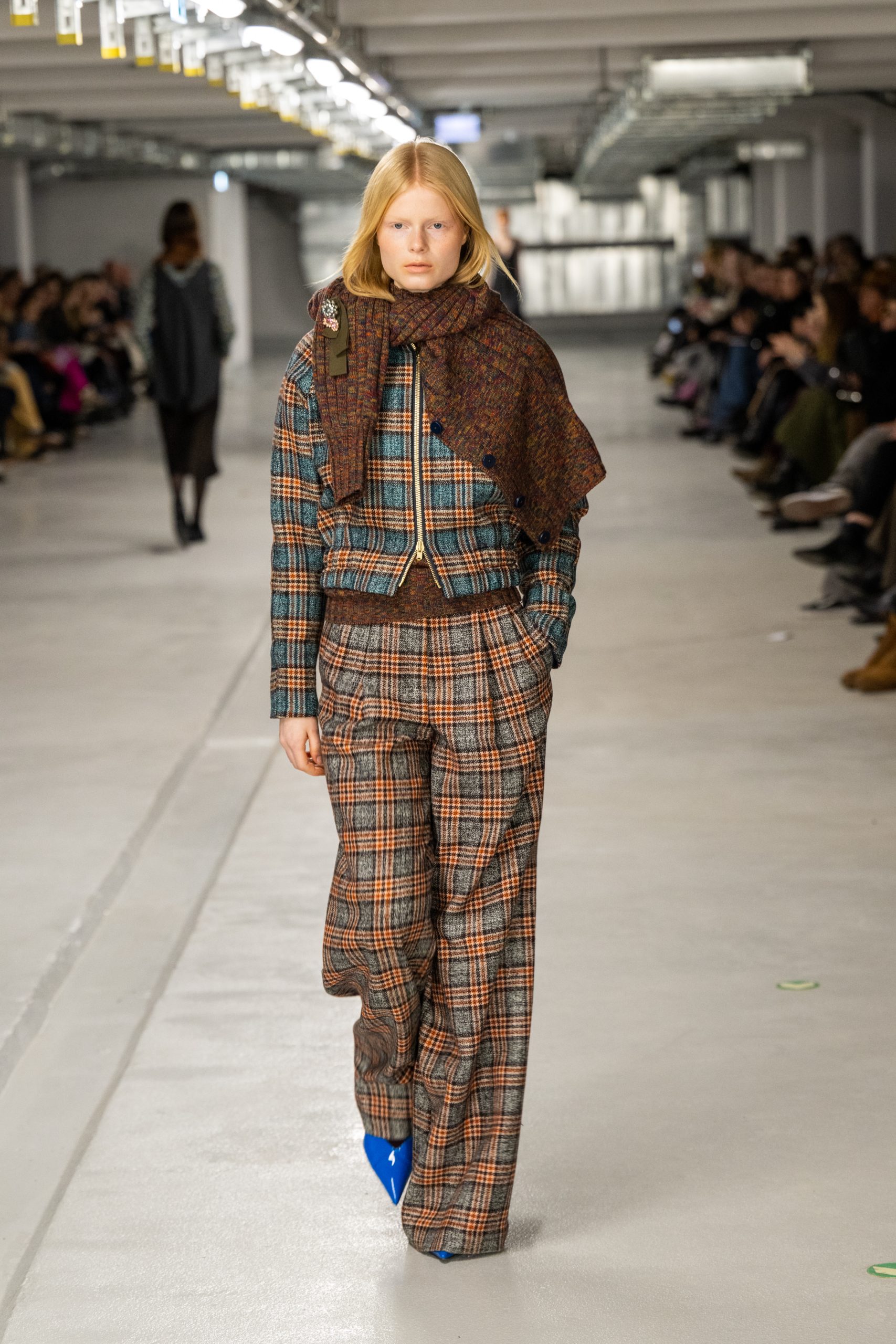
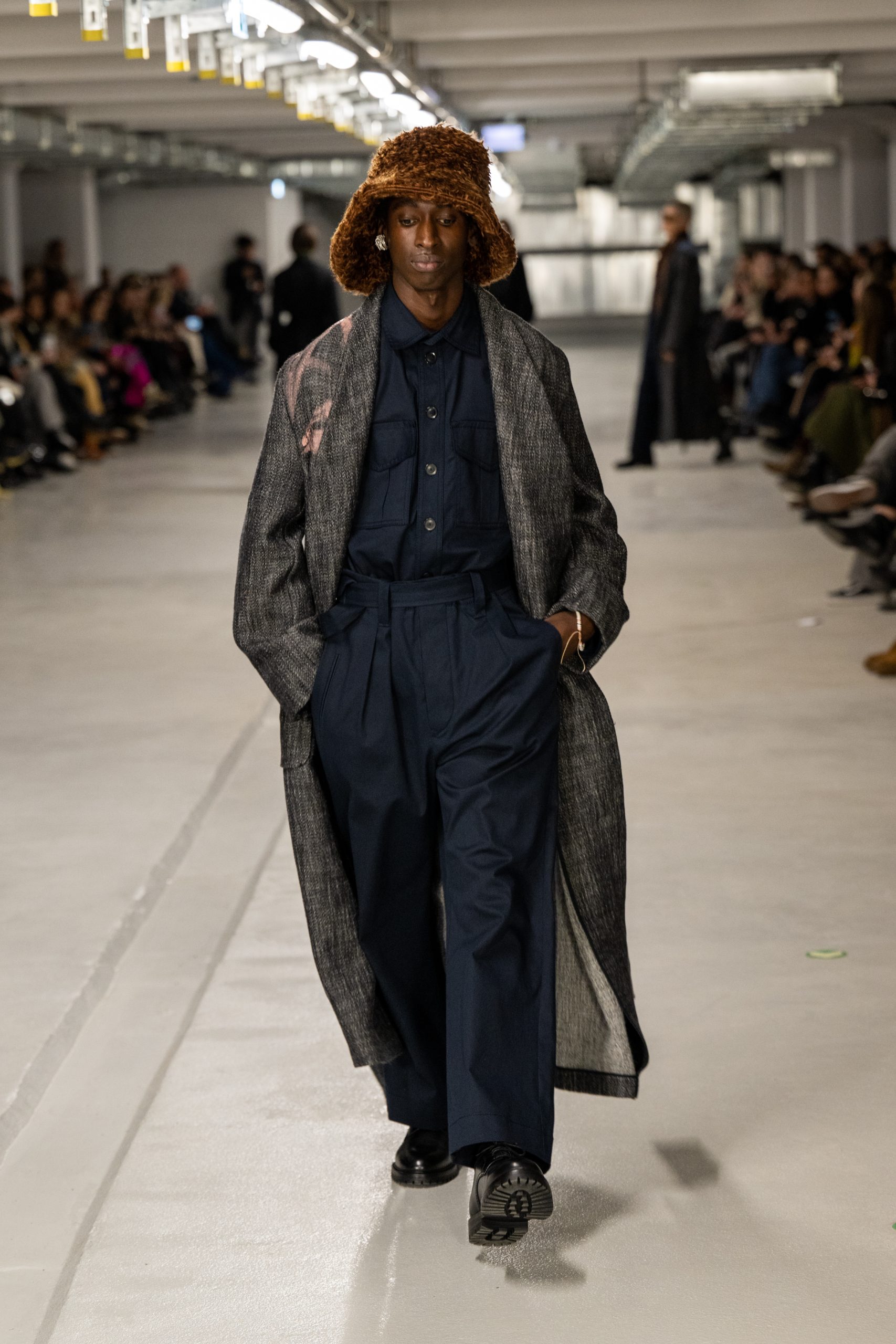


For Otto Drögsler and Jörg Ehrlich, designers of ODEEH, Fall 2023 meant venturing on a journey. The duo were inspired by winter sports advertisements from the 1930s and the jet-set culture of the 1960s and 1970s, adding a touch of nostalgia to the garments which both interpret pre-activewear times in a playful manner. Maximalist wallpaper prints meet minimalistic computer graphics, conceiving motifs that are mixed with ethnically inspired shapes. The designers transform a large number of blankets into lush coats, and thus set a skilful contrast to the underwear: straight-lined suit trousers and knitted designs feature aplenty.
Acceptance Letter Studio

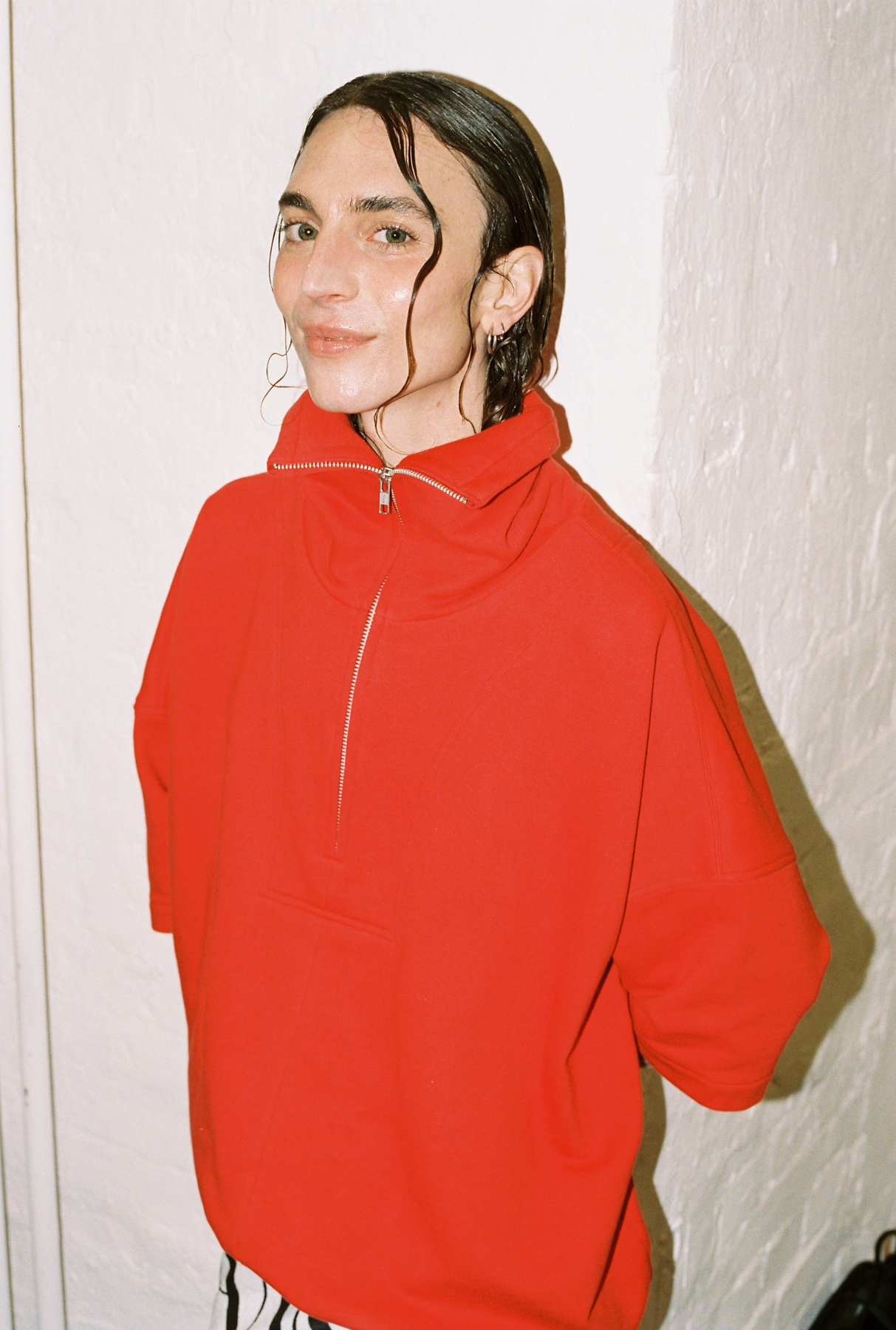
Photography by Ferry Mohr


Paying tributes to marginalised communities is something young designers seem to have found comfort in. A trend that speaks for both young and adult generations, enabling them to ditch stereotypes and champion a free, subversive world. This place that is queer joy, sensuality and belonging forms Acceptance Letter Studio’s Fall 2023 collection. Here, garments look to strive and give wearers freedom, encouraging them to celebrate their uniqueness. The plays with concealments and disclosures let sensual details of menswear offerings meet athletic elements, mixing casual sportswear with sharper tailoring: deconstructed sweatshirt silhouettes become triangle tops. Titled “The Universal Baths,” the collection draws its key inspiration from the infamous Continental Baths of 1970’s New York City, which quickly became an integral part of not only queer history, but club history as well. The designer gives jogging pants a second character with detachable parts.

